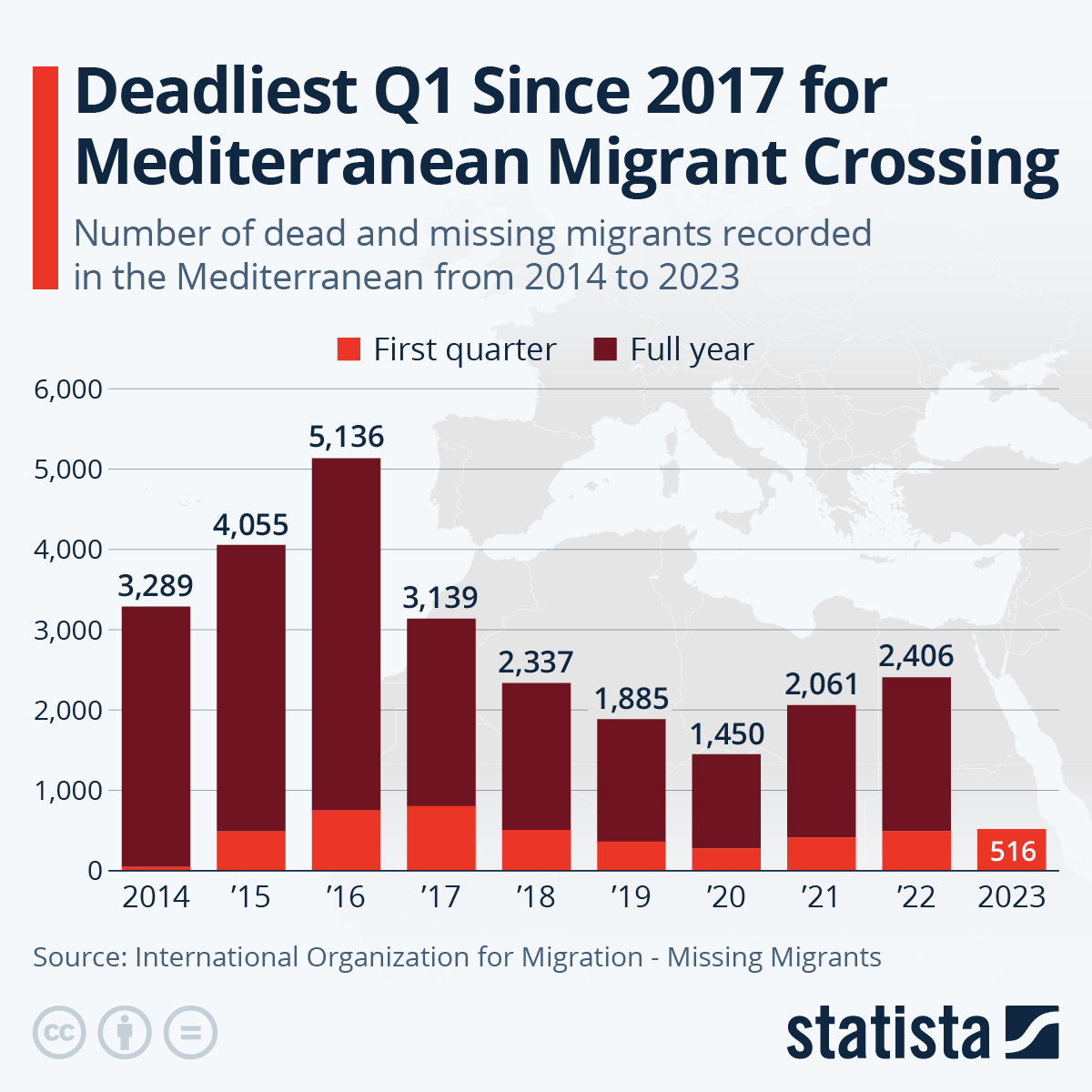
As more migrants are once again crossing the Mediterranean, more deaths are occurring on this migration route that has been deemed the most dangerous in the world.
You will find more infographics at Statista
Over the weekend, around 3,000 migrants reached Italy, with the Italian coastguard evacuating many from crowded boats close to the country's shores, including 400 on a vessel that was adrift in inclement weather. The UN has criticized delays caused by state-led rescue operations as well as the blocking of civilian rescue ships that has become commonplace - both exacerbating the humanitarian crisis in the region.
As Statista's Katharina Buchholz details below, the incident highlights just how dangerous crossing the Mediterranean Sea is for migrants, who are often sent off from Northern Africa in overloaded boats lacking equipment and supplies while being vulnerable to any bad weather or other incidents along the way. The International Organization for Migration's Missing Migrants website counts 516 migrants who died or went missing in the Mediterranean in Q1 of 2023 - more than in any first quarter since 2017.
You will find more infographics at Statista
More than 2,400 migrants died in the Mediterranean in 2022 as this crisis is once more intensifying. In 2020, deaths (and movement on the route) had reached a low point of 1,450 deaths and missing persons. In 2016, a high of 5,136 people lost their lives in this way. Back then, both the Central Mediterranean crossing to Italy and the Eastern crossing to Greece were used by a high number of migrants as the Syrian civil war caused people to flee from the East while at the same time, Africans, for example from Nigeria and Eritrea, undertook the arduous journey north to cross the central Mediterranean. As of 2022, activity on the Eastern route has decreased, while the Central Mediterranean route is now seeing two thirds of registered crossing attempts.
As more migrants are once again crossing the Mediterranean, more deaths are occurring on this migration route that has been deemed the most dangerous in the world.
You will find more infographics at Statista
Over the weekend, around 3,000 migrants reached Italy, with the Italian coastguard evacuating many from crowded boats close to the country’s shores, including 400 on a vessel that was adrift in inclement weather. The UN has criticized delays caused by state-led rescue operations as well as the blocking of civilian rescue ships that has become commonplace – both exacerbating the humanitarian crisis in the region.
As Statista’s Katharina Buchholz details below, the incident highlights just how dangerous crossing the Mediterranean Sea is for migrants, who are often sent off from Northern Africa in overloaded boats lacking equipment and supplies while being vulnerable to any bad weather or other incidents along the way. The International Organization for Migration’s Missing Migrants website counts 516 migrants who died or went missing in the Mediterranean in Q1 of 2023 – more than in any first quarter since 2017.
You will find more infographics at Statista
More than 2,400 migrants died in the Mediterranean in 2022 as this crisis is once more intensifying. In 2020, deaths (and movement on the route) had reached a low point of 1,450 deaths and missing persons. In 2016, a high of 5,136 people lost their lives in this way. Back then, both the Central Mediterranean crossing to Italy and the Eastern crossing to Greece were used by a high number of migrants as the Syrian civil war caused people to flee from the East while at the same time, Africans, for example from Nigeria and Eritrea, undertook the arduous journey north to cross the central Mediterranean. As of 2022, activity on the Eastern route has decreased, while the Central Mediterranean route is now seeing two thirds of registered crossing attempts.
Loading…







